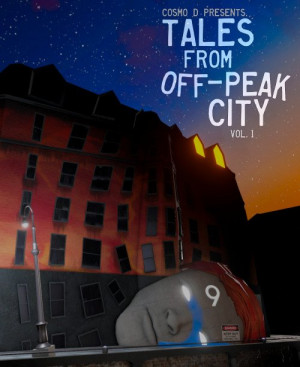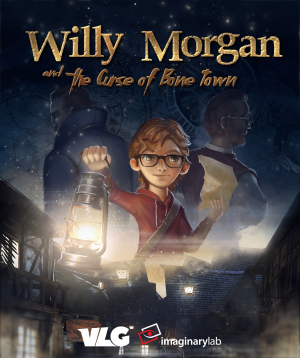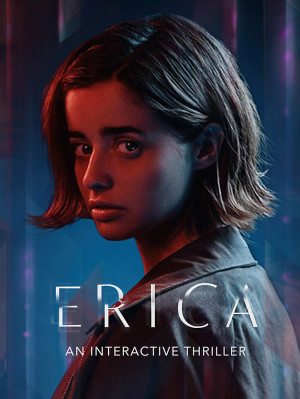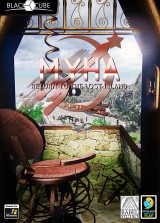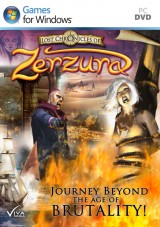Review for The Last Campfire
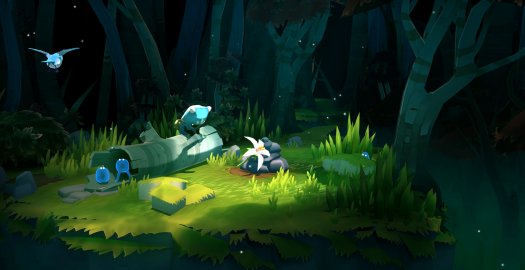
Note: Since time of writing, this game has been updated to include 20% more puzzles, a readable Wanderer's diary, improved controller support and other enhancements. This review is based solely on the original version.
The Last Campfire is a very curious, beguiling adventure. One moment you’re laughing at a rotund hungry pig, the next you’re contemplating the meaning of death. Despite its warm visuals and charming pillow-shaped lead character, the story explores themes of loss, denial, and acceptance. That’s not to say it’s morbid or ponderous – this is still very much a fun and entertaining experience, offering a simple blend of exploration and puzzle elements – but it invites you to immerse yourself in its assured fantasy world and find your own meaning. The Last Campfire isn’t difficult, ground-breaking, or without flaws, but it’s nevertheless a fantastic singular experience, and one that proves to be more stirring than I expected it to be.
Ember is our diminutive hero, a genderless character that I’ll refer to as “she” for sake of convenience, with white eyes peering out from her hood-covered face. She wakes in an unfamiliar clearing, with crumbled statues and cobwebs lining the path, the solitude and darkness around her causing fear to set in. Ember soon stumbles onto a campfire that houses a spirit. Many like Ember have become stuck in this world, the ghost explains, either unwilling or unable to accept their position. They appear to be in a kind of limbo between life and death – or perhaps that’s just my take, since the story is open enough to be interpreted multiple ways. In any case, they have lost their way and become “forlorn,” which turned them into statues, and Ember is invited to help return them to the campfire to be warmed until they’re ready to move on.
There are several of these campfires throughout the world, each representing a distinct hub area. The first is in a purple-hued forest with occasional pockets of light shining through the twisted trees. Elsewhere is the autumnal marsh, with its cracked earth and unusual fauna; and the eerie caves and dark water streaming through them. The environments constantly blend old and new, with worn stone steps and fallen golems sitting alongside makeshift wooden slides, teasing a history whose details are never fully revealed.
Everything is rendered beautifully in 3D, with vibrant colours and atmospheric effects like dust motes in the air and the rustling of grass in the wind. Birds peck the floor and fly off when you draw near, while frogs merrily hop around the outskirts of a pond. It often feels warm, inviting further exploration, though this realm can also engender an air of mystery and unease, like stumbling across a skeleton while the faded black corners of the screen feel disconcertingly claustrophobic. Finding the right tone to make these diverse elements work is something The Last Campfire does very successfully. Children and adults could likely both happily play this game and take away entirely different things.
Humour comes from the visuals, like a crab’s claws used to help with an obstacle before accidentally sending it flying through the air, and from the dialogue, such as when someone tells Ember that she absolutely must cook the local frogs for a crunchy treat. This is equally balanced against a sense of melancholy, like when a tortoise chef has lost its confidence and refuses to accept a compliment, or when Ember’s boat is destroyed and our little pal is left wallowing in hopelessness. It’s interesting to have such a broad range of emotions presented. Some forlorn even refuse Ember’s help, each for their own reasons. “The future is yours, stranger,” says one. “But mine is mine.” You simply have to accept it and continue on your way.
Ember’s journey is narrated entirely by Rachel August, an actor with a wonderfully unique voice that sounds Scandinavian. Her pronunciation and cadence are unlike any I’ve heard in a game before. It’s ethereal, which just adds to the fairy-tale feel of the whole game. As you discover new areas, interact with things, or talk to people, her voice is the only one you hear. My only criticism is that there’s little attempt to perform different voices for each character, which I think would have helped push that storybook approach further. There are also times when the narration claims that a character “spoke hesitantly” or “spoke quietly,” which isn’t entirely reflected in the speech. Regardless, these complaints are minor, and I was impressed overall with the quality of the vocals.
This is all complemented by a lovely soundtrack, perfectly designed to suit each biome. The forest features slow piano and strings, gently whining and reverberating in a way that puts you slightly on edge. Elsewhere, when you meet that giant hungry pig, the music turns jaunty and bouncy, as if Ember is on a whimsical, carefree adventure. Attention is paid to the smaller audio details as well, like the satisfying crackling of fire and mechanical grinding when you pull levers. Quieter moments stand out too, like when you enter a cave and all you can hear is the dripping of water and the echo of Ember’s footsteps. The score is never overbearing or repetitive, but instead lends a magical charm that elevates the action on-screen and contributes greatly to the atmosphere.
As you navigate the land in search of the forlorn statues, there are various obstacles you’ll need to overcome, some more complex than others. It could be something simple like moving blocks to create a path. Or it might be more involved, like leaving a food trail to lure a pig to do your bidding. One of the best sections takes place in a misty maze, where you can move map pieces around to literally alter the routes around you. These challenges occur organically as you explore, and their solutions are always logical and satisfying.
Along the way you’ll also discover chests that contain snippets from a journal of someone called The Wanderer, who seems to have previously travelled a similar path to Ember. These are entirely optional, but skipping them would be a disservice, since they are poetically written and make the ending even more impactful. Getting to these chests is often a puzzle in itself; you might see one on a faraway ledge and be unsure how to get to it until, say, discovering a secret pressure pad that opens the way. While some you may naturally stumble across over the course of the game, others will require you to wander off the beaten path, and you should certainly try your best to open most of them.
Ember carries a satchel that holds a small inventory, but don’t expect traditional adventure gameplay. You click to interact with things (a small circle appears when you get near to indicate the possibility), with no defined ‘look’ or ‘pick up’ options available, so anything collectible is stashed away by default. It’s similarly simple when it comes to using these objects; when you click on something that requires further interaction (like a locked gate that needs a key), your inventory will automatically open. Providing you search everywhere, it’s very unlikely that you will ever find yourself stumped by this streamlined approach.
The controls themselves are just as easy to get to grips with. Click where you want Ember to move, and if the route is clear she will quickly go there. You can double-click to sprint, but I never found the need to. Early in the game, Ember finds a magic horn-type instrument that, when activated, allows you to manipulate specific objects like cubes and platforms you wouldn’t be able to otherwise by clicking and dragging them. Sometimes you’ll also need to rotate your mouse to simulate turning a key or rotating a beam of light. Alternatively, you can directly control Ember with a keyboard or a controller, and this works equally well. Only a few times will you need agility to move out of the way of an obstacle in time, but these moments are forgiving.
When you come across a stone forlorn, touching it transports you inside its mind, represented by a self-contained puzzle area. A lone flame is locked in a cage and it’s Ember’s job to get to it in order to wake the forlorn from its frozen state. To do that you’ll be doing things like switching pipes to reroute power and raise platforms, or carefully lighting a series of lanterns while avoiding the wind. The Last Campfire is very keen on chucking loads of ideas into the mix, so you’ll be nourished with variety, though the same mechanics do pop up in different ways. I had a great time solving each one. Though you’re shown how many still need helping, you don’t need to rescue all forlorn in an area to progress past the campfire, but why would you skip any?
Each of these puzzle rooms loosely symbolises the forlorn’s personal struggle, some better than others. Descending many spiralling staircases to represent someone’s loneliness is well-realised, while putting cubes on pressure pads doesn’t have quite the same effect. As you get closer to the solution, the narrator speaks about the forlorn’s past or feelings. Ultimately these are more standalone vignettes than anything meaty, but it’s a welcome attempt at integrating these logic puzzles into the wider story.
If you like games that really flex your cerebral cortex, The Last Campfire probably isn’t for you. That’s not to say you won’t feel pleased when you solve something, since there are constant bursts of satisfaction throughout, but there are only a couple of sections that I would classify as anything approaching complex; everything else really is simple. Frankly, as my patience wanes as I get older, I don’t like to spend too long on the same thing, but I think a little bit of extra challenge wouldn’t have gone amiss. That said, it’s a credit to the designers it’s always completely clear what your current objective is, especially because it’s never directly dictated to you.
Playing on PC, the game ran smoothly for me apart from two instances. The first is when it completely froze, forcing me to restart the game. There’s no manual save system, which could have been frustrating because I didn’t notice any indication of when my progress was last recorded, but luckily I was able to pick up right where I left off. The second problem was when a pig got stuck floating on an elevator, which then blocked me from solving a puzzle. A restart didn’t solve this – the same issue happened – so I had to change the order of steps I knew I had to take to reach my goal, though at least this workaround was successful.
Often games mistake vagueness for deep meaning, but this one strikes the perfect balance between offering enough detail to be impactful and still leaving room for interpretation. I found the entire tale quite affecting and it took me around seven hours to see everything, which seems like the perfect length without outstaying its welcome. Ultimately, while it’s all quite easy and a few flaws remain, the delightful visuals, the balance of seriousness and humour, and an enchanting soundtrack should be more than enough for you to want to warm yourself by The Last Campfire.
WHERE CAN I DOWNLOAD The Last Campfire
The Last Campfire is available at:
We get a small commission from any game you buy through these links (except Steam).Our Verdict:
The Last Campfire is a wonderful way to while away a few evenings, pondering your own mortality while having a fun time doing it by solving puzzles in a lovely fantasy world.











